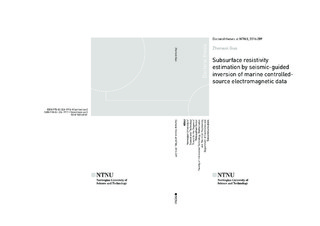| dc.description.abstract | Marine controlled-source electromagnetic (CSEM) has been in commercial use for offshore hydrocarbon exploration for fifteen years. It is significant for geologists and geophysicists to design and interpret a marine EM survey for hydrocarbon exploration. SeaBed Logging (SBL) and towed streamer EM (TSEM) are the most popular data acquisition systems. They have their own advantages on acquisition. We compare the two different data acquisition systems by using 1D sensitivity modelling and 2D inline synthetic data inversion. In these studies, we test the effects of frequency, range, water depth, target dimensions and reservoir burial depth on the detectable capbility of the two acquisition systems. The relationship between the detectable hydrocarbon reservoir depth and water depth is discussed by anomalous transverse resistance (ATR) ratio, which is used to easily evaluate our inversion results. Moreover, the detectability is described for the two data acquisition systems in different water depth. Apparently, the SBL system has an advantage in deep water environment, but the TSEM has a similar sensitivity to the target with the SBL system in shallow water situation.
We develop an irregular sparse mesh to enhance both the speed and resolution of CSEM inversion by introducing structural geological information in the inversion algorithm. This sparse mesh is defined as a coherence-based irregular (IC) sparse mesh, which is based on vertices extracted from available geological information. Synthetic data inversion examples illustrate that the IC sparse mesh has a smaller inversion computational cost compared to the regular dense mesh. Additionally, the IC sparse mesh reduces the computational cost of the matrix operation for model updates. It also has a higher resolution than with a regular sparse mesh for the same number of estimated parameters.
Based on these IC sparse meshes, we propose an image-guided smoothing regularization method in the inversion of marine electromagnetic data. In order to enhance the resolution of marine EM inversion, incorporating seismic constraints into EM inversion is an effective approach. Compared to traditional regular dense mesh, a coherence-based irregular sparse mesh reduces computational cost. The image-guided regularization represents an improvement of regularization and also uses the structure taken from a seismic image. In this thesis, we show that this regularization can improve the results of EM inversions with irregular sparse meshes. The image-guided regularized inversion can be applied to marine CSEM data and MT data, especially, it is able to be used for joint inversion of CSEM and MT data. Both synthetic and real data inversion examples presented in this thesis demonstrate that the proposed methods improve the quality of the resistivity image. | nb_NO |
